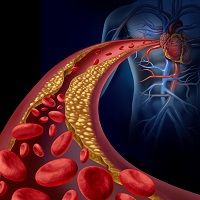Statin Therapy for Atherosclerosis in HIV-Infected Patients
Study results show that treatment with atorvastatin lowers LDL-cholesterol levels and reduces the volume of noncalcified and high-risk plaques in HIV-infected patients with subclinical atherosclerosis.

According to the American Heart Association, people living with HIV are at higher risk for atherosclerosis. This is due to several factors, including higher levels of low-density lipoprotein (LDL) cholesterol and lower levels of high-density lipoprotein (HDL) cholesterol. Other factors contributing to atherosclerosis include traditional risk factors, antiretrovirals and inflammatory factors related to HIV infection.
Statin therapy could potentially provide clinical benefit in this population. However according to the authors of the abstract “Statin Therapy Reduces Coronary Noncalcified Plaque Volume in HIV Patients: A Randomized Controlled Trial,” presented at the 2015 Conference on Retroviruses and Opportunistic Infections, there have been no studies conducted to assess “the ability of statin treatment to achieve regression of coronary atherosclerosis in HIV-infected patients, a population demonstrated to have elevated risk of myocardial infarction.”
In this double-blind, placebo-controlled trial, investigators randomized 40 HIV-infected participants with subclinical coronary atherosclerosis and high levels of LDL-cholesterol to receive treatment with atorvastatin or placebo for 12 months.
The authors reported that, after 12 months, atorvastatin “reduced noncalcified coronary plaque volume compared to placebo (-19.4% [-39.2%, 9.3%] vs. +20.4% [-7.1%, 94.4%], p=0.009). In addition, the number of high-risk plaques was significantly reduced by atorvastatin compared to placebo (change in number of low attenuation plaques -0.2 ± 0.8 vs. 0.4 ± 0.7 lesions, p=0.03 and change in number of positively remodeled plaques -0.2 ± 0.5 vs. 0.4 ± 0.9, p=0.04). Direct LDL-cholesterol (-38 ± 29 vs. 11 ± 21 mg/dL, p2 (-52.2 ± 36.6 vs. -13.3 ± 42.8 ng/dL, p=0.005) significantly decreased with atorvastatin compared to placebo. Statin therapy was well-tolerated, with low incidence of clinical adverse events or laboratory abnormalities.”
Based on these results, the authors concluded that, compared with placebo, atorvastatin therapy “reduces noncalcified plaque volume and high-risk plaque features in HIV-infected patients with subclinical coronary atherosclerosis.”